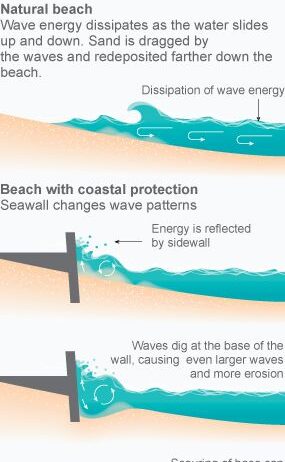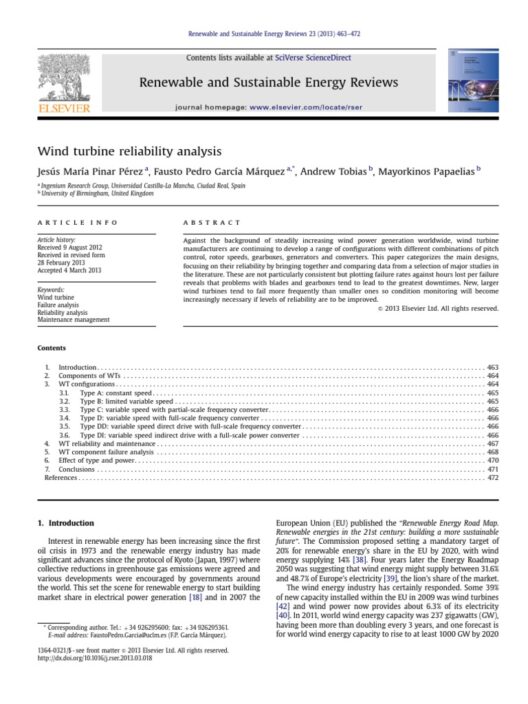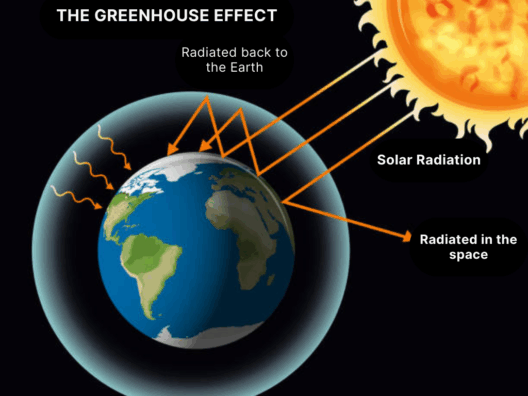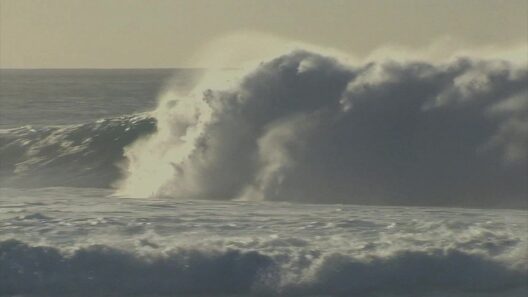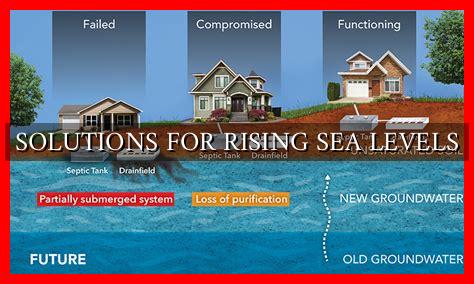Rising sea levels are becoming an undeniable and salient issue that affects coastal communities, ecosystems, and global climates. As the earth experiences shifts in its temperature, the implications are felt in numerous ways. Understanding the myriad of factors that contribute to rising ocean levels is crucial for anyone interested in environmental science, policy-making, or community preparedness. This article elucidates the causative agents and underlying dynamics that culminate in this pressing phenomenon.
Climate Change and Thermal Expansion: The Heat’s Impact
Global warming, a consequence of increased greenhouse gas emissions, is one of the principal drivers behind rising sea levels. The Earth’s average temperature has risen substantially over the past century, with consequences rippling through our oceans. When water heats up, it expands—this phenomenon is known as thermal expansion. Approximately half of the observed sea-level rise since the 1970s can be attributed to this mechanism.
The implications are profound. Thermal expansion causes ocean water to swell, leading to an increase in volume that directly raises sea levels. This uncontrollable upward trend in temperature is primarily driven by anthropogenic activities, such as burning fossil fuels and deforestation. Policymakers and scientists are focused on addressing these human behaviors to mitigate future impacts.
Melting Ice Sheets and Glaciers: A Tipping Point
In addition to thermal expansion, melting glaciers and polar ice sheets contribute significantly to rising sea levels. The Greenland and Antarctic ice sheets are two of the largest reservoirs of freshwater on the planet. These colossal formations of ice are starting to shed their mass at alarming rates due to climate change.
As temperatures rise, not only does the surface of these ice sheets melt, but warmer ocean waters are carving underneath. This melting exacerbates the problem: as the ice retreats, it increases its mobility, ultimately leading to more rapid disintegration. Such phenomena have been observed in places like the West Antarctic Ice Sheet, which has shown signs of irreversible melting.
The implications of this transformation extend beyond simple metrics of volume. The additional freshwater released into the ocean alters salinity and can disrupt marine ecosystems, plays with weather patterns, and exacerbate global temperature increases. This cascading effect showcases the complexity of the issue, as melting ice poses far-reaching consequences not only for sea levels but for our entire climate system.
Land Subsidence: A Localized Challenge
While global phenomena play significant roles in sea-level rise, local factors should not be overlooked. Land subsidence, or the sinking of land, exacerbates the effects of rising seas. This geological shift can result from natural processes such as tectonic shifts, but human activities can also induce subsidence. For example, groundwater extraction, sediment compaction, and mining operations significantly contribute to the sinking of land.
Coastal cities like New Orleans, Venice, and Jakarta showcase how localized factors can deepen the crisis. As these lands decline, they become increasingly vulnerable to flooding, storm surges, and saltwater intrusion, leading to a complex interplay between human activity and natural processes. Communities in these areas must implement strategies to address both subsidence and sea-level rise concurrently. The confluence of these challenges necessitates localized approaches that factor in unique geological conditions.
Ocean Currents and Climate Patterns: The Unseen Influence
Ocean currents play a critical role in regulating global climate patterns. Changes in temperature and salinity can alter the flow of these currents, impacting sea levels localized to certain regions. For instance, alterations in the Gulf Stream can lead to higher sea levels along the East Coast of the United States. The relationship between sea-level rise and ocean currents illustrates the interconnectedness of the Earth’s systems.
Moreover, phenomena such as El Niño and La Niña can cause short-term fluctuations in sea levels. These periodic climate events can produce noticeable rises or declines in local sea levels, complicating long-term projections and planning. Understanding these dynamic forces can inform better strategies for coastal management and disaster preparedness.
Future Projections: What Lies Ahead
Predicting future sea-level scenarios remains a daunting task, fraught with uncertainty due to the many variables at play. Most scientific models suggest that without significant mitigation strategies, sea levels could rise by several feet within the next century. The timelines and impacts will vary by region, largely depending on the local interplay of climate impacts including ice melt, thermal expansion, and land subsidence.
In light of these alarming projections, robust climate adaptation and mitigation measures are imperative. Coastal communities must assess vulnerabilities, invest in resilient infrastructure, and engage in restoration projects, such as rebuilding wetlands and mangroves that act as natural barriers against storm surges. Public education and policy advocacy are also vital to build awareness and foster proactive responses to the impending crisis.
Conclusion: The Imperative for Action
Rising sea levels come from a complex matrix of influences that intertwine natural phenomena with human agency. Addressing this pressing issue demands an integrative approach, focusing on scientific understanding, community preparedness, and policy reform. As the magnitude of the threat continues to escalate, collective action is essential. The future of our coastal ecosystems and communities hangs precariously in the balance—prompting an urgent call to inform, engage, and empower society in tackling one of the most critical challenges of our time.



